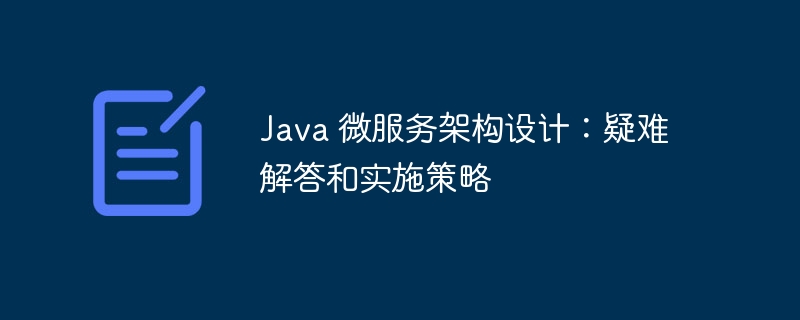
Common difficulties with microservice architecture in software development include: Service communication: Use message queues, REST API or gRPC to achieve loose coupling and asynchronous communication. Service discovery: Utilize mechanisms such as Eureka, Consul or Kubernetes to maintain registries and route through load balancers. Data consistency: Enforce eventual consistency and leverage distributed transactions or event sourcing to manage cross-service data updates. Deployment and Management: Continuous integration and continuous deployment using Docker, Kubernetes, and CI/CD pipelines. Monitoring and Alerting: Ensure normal service operation and rapid fault detection with metrics and logging tools and alert mechanisms.

Java Microservice Architecture Design: Troubleshooting and Implementation Strategies
Introduction
Microservices architecture is increasingly popular in modern software development, providing advantages such as flexibility, scalability, and maintainability. However, there are some common challenges and difficulties when designing and implementing a microservices architecture. This article will explore these difficulties in depth and propose corresponding solutions and practical cases.
Common difficulties
1. Communication between services
Practical case: Spring Cloud Stream: A lightweight framework for building scalable stream processing applications, supporting multiple message queues.
2. Service discovery
Practical case: Netflix Eureka: a well-known service discovery framework that provides registration and discovery functions based on the heartbeat mechanism.
3. Data consistency
Practical case: Apache Kafka: a distributed stream processing platform that can store and process massive data and achieve eventual consistency.
4. Deployment and management
Practical case: Jenkins: an open source continuous integration and continuous delivery tool that supports microservice pipeline automation.
5. Monitoring and Alerts
Practical case: Prometheus: an open source monitoring and alarm system that provides a powerful query language and intuitive dashboard.
Conclusion
Microservice architecture design is a complex task, but by understanding common pain points and adopting appropriate solutions, you can successfully implement and benefit from This modern architecture paradigm. The practical cases mentioned in this article provide specific guidance and best practices to help developers solve real-world problems and build efficient and scalable microservice applications.
The above is the detailed content of Java Microservice Architecture Design: Troubleshooting and Implementation Strategies. For more information, please follow other related articles on the PHP Chinese website!
